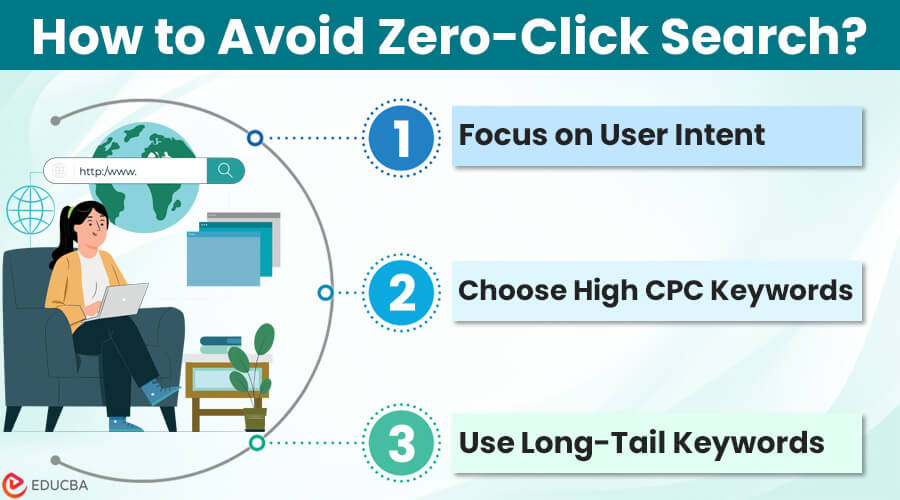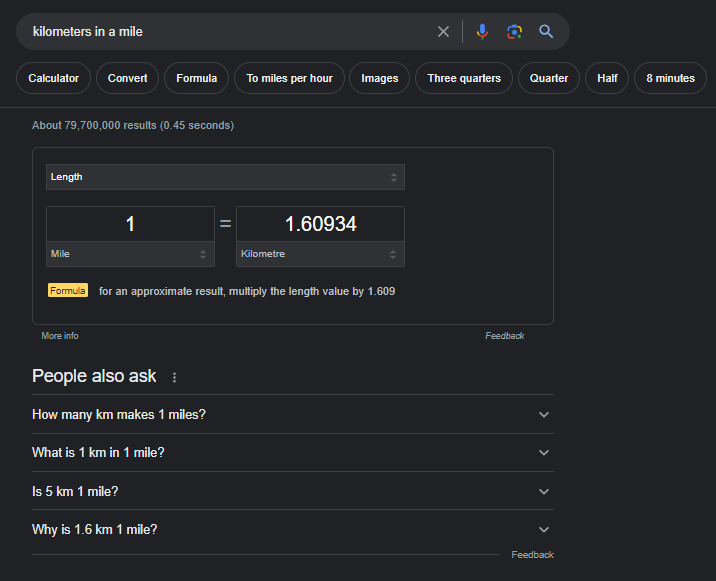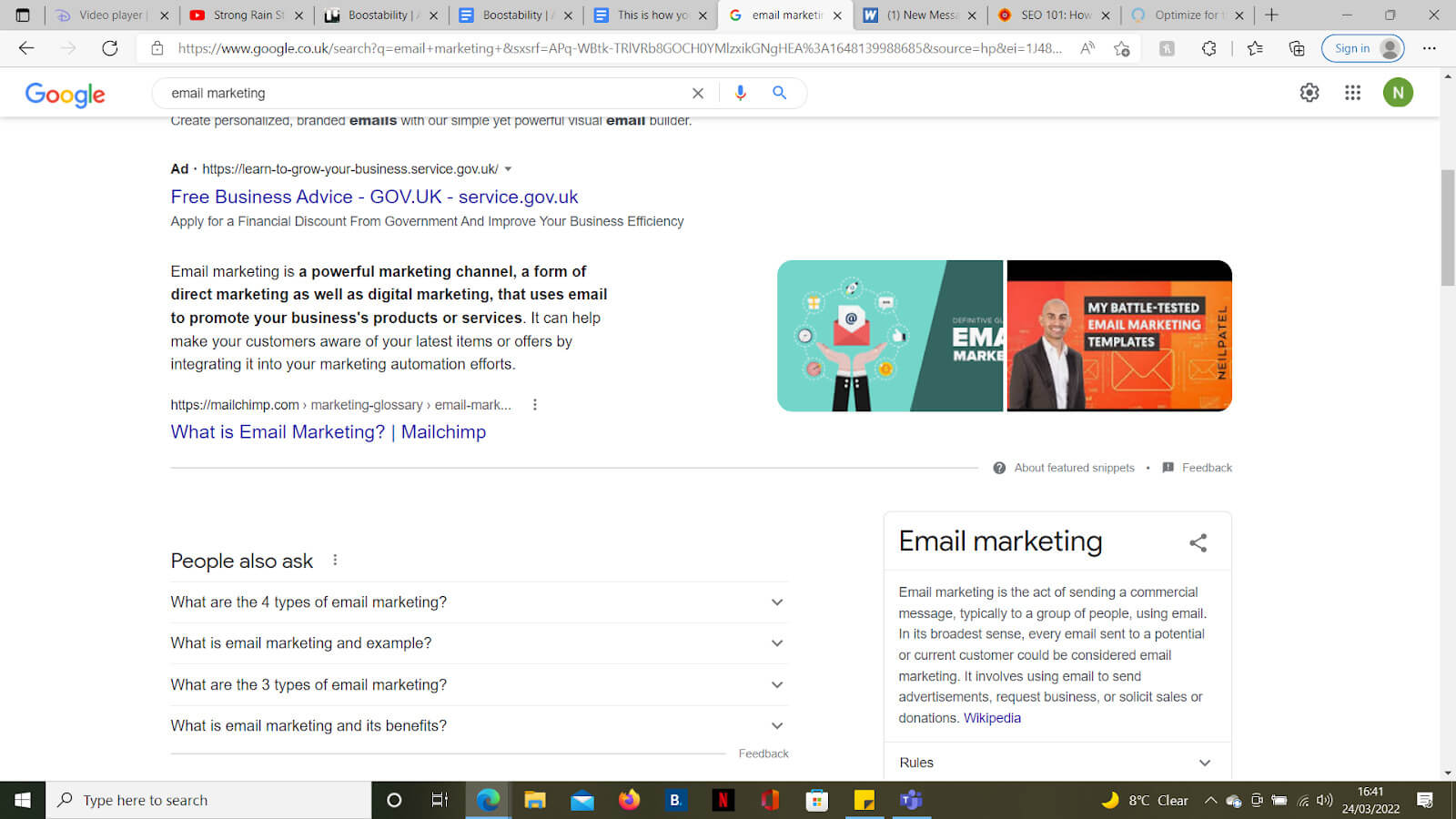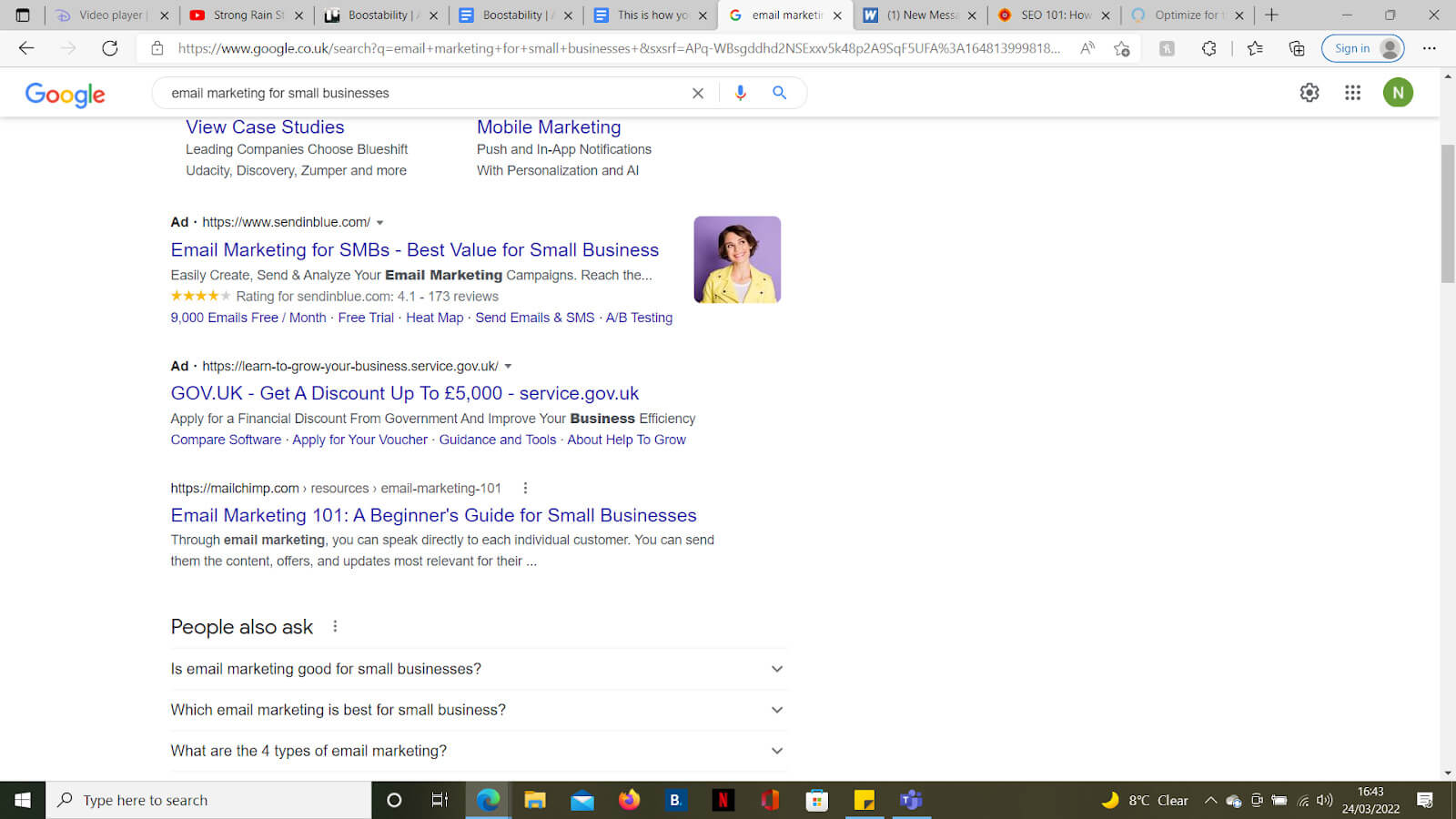What is Zero-Click Search?
Suppose you search for something on a search engine like Google, and it provides all the necessary information directly on the search results page. Now, you don’t need to click on any provided links for further information. Ever wondered why this happens? This is a phenomenon known as zero-click searches.
It typically happens when the search engine generates a featured snippet of information at the top of the search results page, answering your query comprehensively. As a result, the user obtains the desired information without needing to navigate to any external websites, hence the term “zero-click.”
Just to give you an example. If you search for “kilometers in a mile” on Google, you get this:
(Source: Google)
Evolution of Zero-Click Search Trend
An increasing number of Google searches end without users clicking on any search results. This results in missed opportunities for website owners to attract traffic.
As Google technology advances, the trend of zero-click searches will continue. This trend is growing because search engines want to provide users with instant and relevant information right on the search results page. According to SemRush, 25.6 of desktop searches are zero-click searches.
However, there are effective strategies to reduce the impact of zero-click searches and drive traffic to your website.
Disadvantages of Zero-Click Search
From a marketing perspective, zero-click search is a problem. Here are some of the disadvantages of zero-click searches:
1. Reduced Website Traffic
Zero-click searches lower website traffic because users find the information they need on the search results page without clicking any links. This poses a significant challenge for eCommerce websites, which rely on website traffic to generate sales. When users can access the information they seek without visiting the website, it reduces the opportunity for engagement and conversion.
2. Limited Branding Opportunities
Zero-click searches offer fewer branding opportunities if Google doesn’t feature your brand in snippets for a given query. Since users typically don’t click on your website link, they miss out on experiencing your brand identity, values, and product offerings.
3. Lack of Control Over Content Presentation
You have limited control over how your content is presented in a featured snippet if Google chooses to display it. This lack of control extends to shaping people’s perceptions of your brand based on what they see on search engine results pages.
How to Avoid Zero-Click Search?
It doesn’t matter if marketers like them or not; the truth is that Google snippets are here to stay. The good thing is there are ways to avoid zero-click searches. You can learn three of those excellent strategies in this section.
1. Focus on User Intent
When selecting keywords, it’s important to consider the needs and intentions of your users. Focus on keywords that require comprehensive information and detailed responses.
Avoid targeting keywords associated with simple queries like dates, addresses, or quotes, as Google’s snippets often provide quick answers. Instead, prioritize transactional searches, where users are looking to purchase but may be undecided about where to do so. For example, keywords like “22” mountain bike tires” indicate specific product intent and are valuable for e-commerce pages.
Additionally, consider targeting navigational searches involving users seeking a specific website or brand. These searches typically have a single correct answer, such as “the American Red Cross.”
Commercial searches are also valuable, as they indicate users are actively looking for a product or service but may not have a particular company in mind. Examples include targeting “best budget lawn mower,” with product comparison pages or similar content.
2. Choose High CPC Keywords
Keywords with a high cost per click (CPC) are less likely to feature Google snippets, as Google prioritizes ad revenue. Conversely, low CPC keywords are likelier to have snippets for a better user experience.
Thus, to identify high CPC keywords, check the CPC column in your preferred SEO tool, such as Ahrefs Keyword Explorer, which is one of the best white label SEO software.
(Source: Ahref)
However, targeting a high CPC keyword doesn’t guarantee a higher ranking in search results. You still need compelling page titles to entice clicks and follow good SEO practices. Furthermore, ensure you have a high-quality landing page and content to attract organic traffic. Generative AI can assist in creating engaging copy for your website.
3. Use Long-Tail Keywords
Utilizing long-tail keywords can help you avoid zero-click searches and increase the chances of users clicking on your page. High-quality insights often don’t fit into Google snippets due to their depth and complexity.
For example, when you search ‘email marketing’ on Google, you get this snippet giving a general definition:
(Source: Google)
But when you search ‘email marketing for small businesses,’ you just get links and no snippets.
(Source: Google)
To capitalize on this, target long-tail keywords in your content creation. Since Google is less likely to provide snippets for these queries, users will have to click on search results, potentially leading them to your content.
You can identify long-tail keywords using the same keyword research tools mentioned earlier.
Other Tips to Improve Search Engine Ranking
To improve your website’s search engine ranking:
- Consider partnering up with a trusted SEO agency.
- Ensure your website is easy to use and navigate so that visitors stay engaged and are more likely to take the actions you want.
- Optimize your website for SEO hosting to improve its visibility and performance in search results.
Final Thoughts
In conclusion, while zero-click searches are common with Google’s snippets, there are ways to drive traffic to your site and avoid them. You can maximize your impact by combining the best practices mentioned in the article. Additionally, don’t forget to implement SEO best practices to ensure your site appears prominently on search engine results pages. This ensures users choose your link over competitors’ when snippets are unavailable.
Recommended Articles
We hope this article on “Zero-Click Search” was informative and helpful. To learn more about related topics, refer to the articles below.






